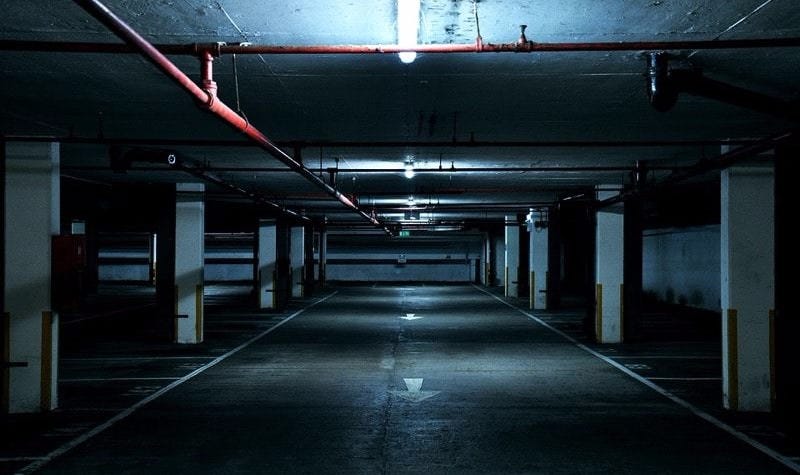Transitional Spaces Kill
How to Survive the Most Dangerous Zones in Daily Life
The Hidden Danger of In-Between Spaces
Most people think of danger zones as high-crime neighborhoods, dark alleys, or warzones. In reality, some of the riskiest spots are the ordinary “in-between” places we move through every day, such as parking lots, lobbies, gas stations, stairwells, and entrances.
Security professionals call these transitional spaces. They’re the choke points of daily life, where you move from one environment to another. The walk from your car to the store. The foyer after church. The gas pump at 10 p.m.
These spaces feel routine, but that false sense of security is why they’re so frequently targeted. Criminals and terrorists know that when you’re in transit, you’re predictable, distracted, and often less prepared to defend yourself.
According to the FBI’s Uniform Crime Reporting Program, parking lots and garages alone account for roughly 20% of all violent crimes in the U.S. each year…around 203,000 incidents in 2022. That’s more than convenience stores, bars, or gas stations combined.
With holiday parades, shopping, and travel ahead, transitional spaces will be busier…and more dangerous.
The bottom line: transitional spaces kill because they compress movement, limit escape options, and create predictable patterns attackers can exploit.
Why Transitional Spaces Are Prime Targets
Predictability
Attackers don’t need to guess where you’ll be…they know you’ll exit a door, walk through a hallway, or fuel up at a pump. That predictability makes planning an ambush easy.
Limited Cover and Escape
In a hallway, stairwell, or parking garage, there may be nowhere to duck behind and only one way out. You’re funneled through choke points.
False Sense of Safety
People let their guard down because transitional spaces feel like part of their “safe zone.” You’re focused on getting somewhere, not on watching for threats.
As one self-defense instructor with MUNIO bluntly puts it, parking garages “represent everything common sense tells us to avoid, dimly lit, unmonitored areas and isolation, making it a perfect spot for bad guys to hide and attack”.
Real-World Examples
Parking Lot Shootings: In September 2023, seven people were shot in a casino parking lot in Eagle Pass, TX. In another case, a man randomly opened fire in a Texas Target parking lot, killing three.
Choke Point Terror Attacks: The Manchester Arena bombing (2017) killed 22 and injured over 200 when the attacker detonated in the foyer where concert-goers were exiting. In October 2025, a terrorist rammed worshippers and attacked with a knife at the entrance of a synagogue in Manchester, UK, deliberately striking at the doorway choke point.
Vehicle Ramming at Events: The Waukesha Christmas Parade attack (2021) left five dead and 40+ injured when an SUV plowed through the crowded parade route.
Gas Station Robberies: Gas pumps are notorious ambush points. In Paterson, NJ (2023), armed robbers hit two gas stations within minutes, targeting people fueling cars while distracted.
Each example highlights the same truth: transitional spaces are where attackers wait because they know victims will pass through and be vulnerable.
If you want the specific attack patterns, the drills that actually change outcomes, and the step-by-step scenario walk-through, keep reading.
Keep reading with a 7-day free trial
Subscribe to Prepared Brief to keep reading this post and get 7 days of free access to the full post archives.

